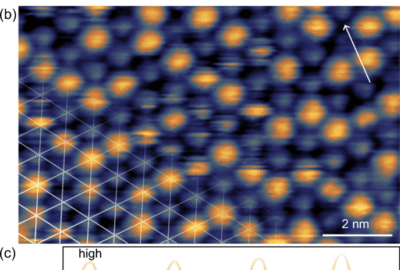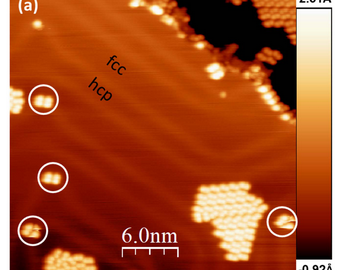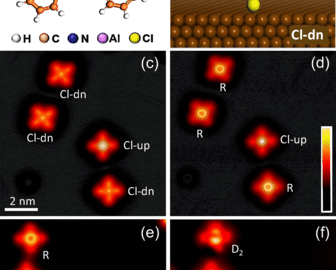publications
Encoding Information on the Excited State of a Molecular Spin Chain
The quantum states of nano-objects can drive electrical transport properties across lateral and local-probe junctions. This raises the prospect, in a solid-state device, of electrically encoding information at the quantum level using spin-flip excitations between electron spins. However, this electronic state has no defined magnetic orientation and is short-lived. Using a novel vertical nanojunction process, these limitations are overcome and this steady-state capability is experimentally demonstrated in solid-state spintronic devices. The excited quantum state of a spin chain formed by Co phthalocyanine molecules coupled to a ferromagnetic electrode constitutes a distinct magnetic unit endowed with a coercive field. This generates a specific steady-state magnetoresistance trace that is tied to the spin-flip conductance channel, and is opposite in sign to the ground state magnetoresistance term, as expected from spin excitation transition rules. The experimental 5.9 meV thermal energy barrier between the ground and excited spin states is confirmed by density functional theory, in line with macrospin phenomenological modeling of magnetotransport results. This low-voltage control over a spin chain’s quantum state and spintronic contribution lay a path for transmitting spin wave-encoded information across molecular layers in devices. It should also stimulate quantum prospects for the antiferromagnetic spintronics and oxides electronics communities.
Kostantine Katcko, Etienne Urbain, Franck Ngassam, Lalit Kandpal, Bhavishya Chowrira, Filip Schleicher, Ufuk Halisdemir, Di Wang, Torsten Scherer, Damien Mertz, Benoit Leconte, Nicolas Beyer, Daniel Spor, Pierre Panissod, Arnaud Boulard, Jacek Arabski, Christophe Kieber, Emmanuel Sternitzky, Victor Da Costa, Michel Hehn, François Montaigne, Armel Bahouka, Wolfgang Weber, Eric Beaurepaire, Christian Kübel, Daniel Lacour, Mébarek Alouani, Samy Boukari, Martin Bowen
Adv. Funct. Mater. 2021, 31, 2009467. https://doi.org/10.1002/adfm.202009467
Comments are closed







